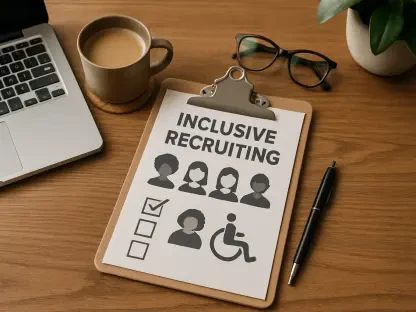In the bustling world of shift work, where long hours and unpredictable schedules define industries like care, cleaning, and hospitality, a silent frustration brews among workers who often feel undervalued. Picture a caregiver finishing a grueling 12-hour shift, only to stare at a payslip that might as well be written in code, fueling doubt not just in the numbers, but in the employer’s fairness. The uncertainty of whether the pay reflects the sweat and dedication strikes at the heart of workplace trust, leaving shift workers questioning their value. What if the key to bridging this gap lies in something as fundamental as transparency?
The significance of this challenge cannot be overstated. In sectors where high turnover and burnout are rampant, payroll clarity has emerged as a linchpin for fostering trust and stability. With the post-pandemic workforce demanding more visibility and respect, employers face mounting pressure to address these concerns. Transparent payroll practices are no longer a luxury but a necessity to retain talent and build loyalty. This exploration dives into how clarity in pay processes can transform workplace dynamics, mend broken trust, and empower both employees and employers in shift-based industries.
Why Payroll Clarity Is Critical for Shift Workers
In industries dominated by shift work, the lack of clear payroll information creates a persistent undercurrent of tension. Employees in care and hospitality often juggle erratic schedules, working nights, weekends, and holidays, yet many struggle to understand how their earnings are calculated. This opacity breeds suspicion, as workers wonder if they’ve been compensated fairly for their efforts. The emotional toll of this uncertainty compounds the physical demands of their roles, making payroll clarity a pressing concern.
Beyond the individual impact, unclear payroll systems affect entire teams and organizations. When workers cannot predict their income or decipher deductions, morale dips, and distrust festers. A 2023 study by the UK’s Chartered Institute of Payroll Professionals revealed that nearly 60% of shift workers reported dissatisfaction with payroll transparency, correlating with higher absenteeism rates. This statistic underscores a broader cultural issue: without clear communication, the foundation of a healthy workplace begins to crack.
The Trust Deficit: Failures of Opaque Payroll Systems
Delving deeper into shift-based sectors like hospitality, the systemic flaws of opaque payroll processes become evident. Fragmented scheduling tools and manual payroll calculations often lead to errors, such as missed overtime payments or incorrect deductions. These mistakes, while sometimes unintentional, signal to employees that their time and labor are undervalued. In an era where flexible scheduling has become a norm to attract staff, the absence of visibility into pay only deepens the rift between workers and management.
The consequences ripple through organizational culture, especially in high-stress environments. Distrust fueled by payroll issues contributes to disengagement, with many workers feeling unheard or exploited. Research from the UK Hospitality Association indicates that 45% of workers in the sector cite pay disputes as a primary reason for leaving jobs. For employers, this translates into costly turnover and recruitment challenges, highlighting how opaque systems fail both parties in the long run.
Transforming Dynamics with Transparent Payroll Practices
Payroll transparency offers a powerful antidote to these challenges, reshaping the relationship between shift workers and employers. Providing real-time access to earnings data through digital platforms empowers employees to track their hours and pay with confidence. This visibility fosters a sense of respect, as workers see their contributions accurately reflected in their compensation. Companies adopting such practices report fewer disputes, with a 2024 industry survey showing a 30% reduction in payroll-related complaints after implementing transparent systems.
The benefits extend beyond individual empowerment to influence broader workplace culture. Transparent payroll processes eliminate confusion over payments, allowing teams to focus on their roles rather than administrative grievances. In industries plagued by staffing shortages, this clarity boosts morale and loyalty, creating a positive feedback loop. For instance, a mid-sized UK care provider noted a 25% improvement in employee retention after rolling out a transparent payroll app, demonstrating how trust can become a competitive advantage.
Moreover, the trend toward transparency aligns with workforce expectations in the current landscape. Post-pandemic shifts have amplified the demand for fairness and accountability, pushing employers to adopt tools that prioritize visibility. When workers feel valued through clear communication, engagement rises, and organizations build a reputation for integrity. This cultural shift proves that payroll transparency is not just a fix for errors but a strategic tool for long-term success.
Voices from the Field: Perspectives on Payroll Change
Hearing directly from those impacted by payroll challenges brings the issue to life. An anonymized hospitality worker shared the frustration of waiting weeks to resolve a payment discrepancy, feeling dismissed by management during the process. In contrast, after their employer adopted a transparent payroll system, the same worker expressed relief at being able to check earnings instantly via an app, describing it as a “game-changer” for peace of mind. These personal accounts highlight the emotional weight of payroll clarity.
Industry innovators echo these sentiments, emphasizing technology’s role in solving entrenched problems. Ayodeji Moshood, founder of Debly, points out that tools like Debly Pro integrate shift management and payroll data to create a shared, transparent view for workers and employers. “Trust starts with clarity,” Moshood notes, explaining how AI-driven features help automate calculations and resolve queries in real time. Such advancements signal a shift toward systems that prioritize both efficiency and empathy.
These combined perspectives—from frustrated employees to forward-thinking leaders—underscore the stakes of payroll transparency. The frustration of unclear pay isn’t just a logistical hiccup; it’s a barrier to dignity at work. Meanwhile, solutions that bridge this gap are gaining traction, offering hope for industries long burdened by distrust. The human stories behind the data reveal why this issue resonates so deeply across shift-based sectors.
Practical Steps to Implement Payroll Transparency
For employers and HR leaders looking to build trust, actionable strategies can pave the way for payroll transparency. Adopting integrated HR technology platforms that automate calculations and provide real-time earnings apps is a critical first step. These tools ensure accuracy while giving workers immediate access to their pay data. A user-friendly interface, with clear payslip summaries, further enhances accessibility, catering to diverse workforces in shift-based roles.
Beyond technology, fostering a culture of open dialogue is essential. Training managers to address pay concerns with empathy and transparency helps rebuild confidence among teams. Instant query resolution features, embedded in payroll systems, can also minimize delays in addressing issues. A 2025 report by HR Tech Review found that companies with proactive communication around pay saw a 40% increase in employee satisfaction, proving the value of combining technology with a human touch.
Tailoring these steps to the unique demands of shift work ensures their effectiveness. Regular feedback loops, where workers can voice concerns about payroll processes, should be encouraged. Additionally, employers must prioritize compliance with labor regulations to avoid discrepancies that undermine trust. By aligning technology, training, and transparency, organizations can create an environment where financial clarity becomes a cornerstone of workplace relationships.
Reflecting on a Path Forward
Looking back, the journey through the challenges and solutions surrounding payroll transparency reveals a profound truth: trust is often the missing piece in shift-based workplaces. The stories of workers grappling with unclear payslips and the insights from innovators striving for change paint a vivid picture of an industry at a turning point. Each step toward clarity proves to be a step toward dignity, reshaping how employees and employers interact.
As a next consideration, organizations are encouraged to view payroll transparency not as a mere administrative fix but as a strategic priority. Investing in intuitive technology and fostering open communication emerge as vital actions to sustain trust. HR leaders who champion these changes find themselves better positioned to attract and retain talent in competitive sectors.
Ultimately, the path forward rests on a commitment to empathy alongside innovation. Employers who embrace transparent practices discover that small changes in visibility lead to significant gains in morale and loyalty. The lesson is clear: by prioritizing clarity, shift-based industries can build a future where trust is no longer a question, but a foundation.









